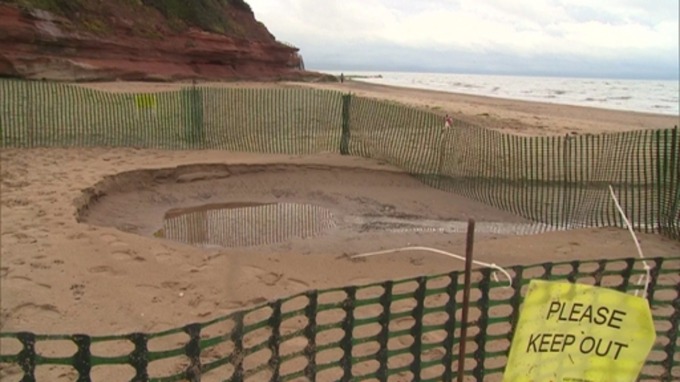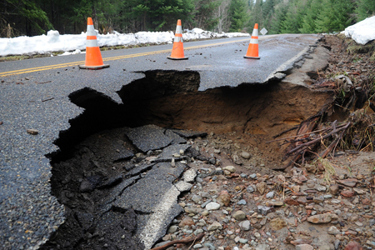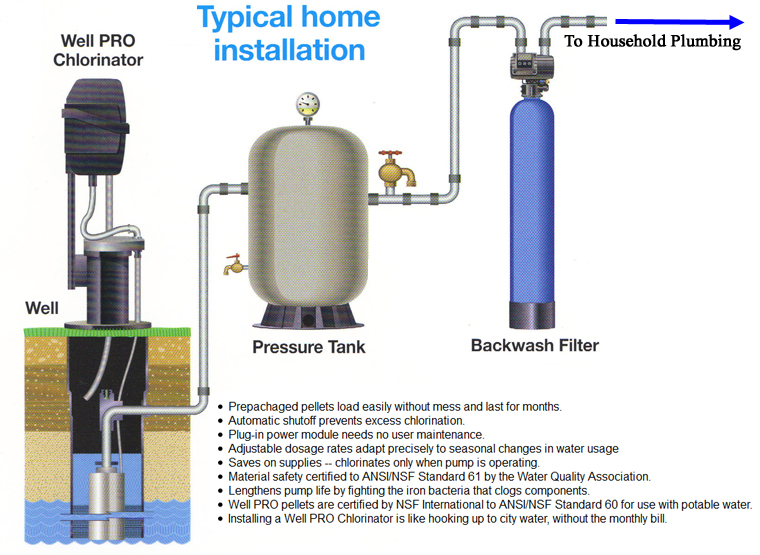Water News for March 2025
Pure Water Gazette Introductory Note. The water news for March would be voluminous if we included all of the press releases from the new administration’s EPA celebrating its many regulatory rollbacks. We decided to limit our reporting to EPA administrator Lee Zeldin’s boast that he has brought about “The greatest and most consequential day in U.S. History” by tossing aside years of scientific accomplishments in order to “power the great American comeback.” It’s hard to imagine what the great day we’re going back to looks like. Is it the smog that we want back, or the rivers that caught fire because they were laden with chemicals?
Those who were around in 1980 may be reminded of a very similar situation where a president appointed an agency head who was opposed to the mission of the agency. James G. Watt as Secretary of the Interior did not work out well. Watt, a religious zealot, believed that the end of the world was just around the corner and there was, therefore, no reason to protect the environment. Who cares about the forests or water quality if God is going to burn the place down anyway? (For some reason, accumulating wealth in a soon-to-end world did not fall under this logic.) Watt’s reign of terror lasted only a couple of years. President Reagan sent him packing after an outrageous racial slur brought public opinion crashing down on him. (No one, by the way, accused the president of being “woke.” Decency was decency before it was mandated by DEI.)
Here is the new EPA administrator congratulating himself:
“The Greatest and Most Consequential Day in U.S. History”
WASHINGTON – U.S. Environmental Protection Agency (EPA) Administrator Lee Zeldin announced the agency will undertake 31 historic actions in the greatest and most consequential day of deregulation in U.S. history, to advance President Trump’s Day One executive orders and Power the Great American Comeback. Combined, these announcements represent the most momentous day in the history of the EPA. While accomplishing EPA’s core mission of protecting the environment, the agency is committed to fulfilling President Trump’s promise to unleash American energy, lower cost of living for Americans, revitalize the American auto industry, restore the rule of law, and give power back to states to make their own decisions. EPA Statement.
“Today is the greatest day of deregulation our nation has seen. We are driving a dagger straight into the heart of the climate change religion to drive down cost of living for American families, unleash American energy, bring auto jobs back to the U.S. and more,” said EPA Administrator Zeldin. Water Online.
New EPA Director Plans to Strip Agency of Chemists, Toxicologists, Biologists and Other Experts
The New York Times reported that EPA Administrator Lee Zeldin submitted a plan to the White House to dismantle the agency’s Office of Research and Development. The proposal called for eliminating 50% to 75% of the office’s 1,500 or so chemists, toxicologists, biologists, and other experts who conduct essential research to inform federal policies.
The background: The research office plays a critical role in the agency’s mission to safeguard public health and the environment. It works alongside EPA offices that oversee air and water quality, chemical safety, toxic chemicals, and children’s health and is responsible for answering key questions that others within the agency rely on to develop policies. The office’s research has informed policymaking on algal blooms, soot, formaldehyde, and PFAS, among many other health threats.
The implications: Laying off most of the office’s staff, many of whom are career scientists, would leave the EPA without the independent and rigorous science needed to develop effective regulations. Without the office, the EPA might develop policies ungrounded in research or simply rely upon science funded by the very industries it regulates. Eos.
NYC Water Supply Threatened by Road Salt
The suburban reservoirs that supply 10% of New York City’s vaunted drinking water are getting saltier due to decades of road salt being spread near the system — and they will eventually have to be abandoned if nothing is done to reverse the trend, city officials warn.
The plug wouldn’t have to be pulled until early next century, according to a new study. But the soaring saltiness could eventually affect the famous taste of the Big Apple’s water, which is sometimes called the champagne of tap water, and poses a challenge to managers of a system that serves more than 9 million people. MSN.
The Consequences of Retreating Glaciers
Retreating glaciers threaten the food and water supply of 2 billion people around the world, the UN has warned, as current “unprecedented” rates of melting will have unpredictable consequences.
Two-thirds of all irrigated agriculture in the world is likely to be affected in some way by receding glaciers and dwindling snowfall in mountain regions, driven by the climate crisis, according to a Unesco report. The Guardian.
Bottled Water
As droughts become more prevalent, corporate control over our drinking water is threatening the health of water sources and the access people have to them. A report explores how foreign multinational companies are extracting billions of liters of water from natural aquifers to sell back to the same communities from which it came – for huge profits. The Guardian.
EPA to revisit “Waters of the United States”
The “Waters of the United States” rule has undergone many changes, revisions, and reinterpretations since it was first introduced during the Obama administration. The controversial part of the rule involves the regulation of temporary streams that eventually empty their pollution into the nation’s lakes and rivers. Case in point: A rural family pipes its raw sewage into a ditch downwind of the home. Eventually, rain washes the sewage from the ditch to a small stream that feeds into a larger stream. Under the Waters of the United States rule, the rural home is responsible for disposing of the sewage so that it does not contaminate the nation’s water. The question is, does the government have the right to tell the homeowner what he can dump into the ditch on his own property? Water Online
Colorado River
The fate of the Colorado River has become a hard question with the Trump budget cuts. Water Online
Is Texas Going Dry?
A recent assessment shows that Texas is “on the brink of running out of water” and points out that much of the problem results from aging infrastructure. The amount of water lost in Texas water systems every day is “enough to meet the total annual municipal needs of Austin, El Paso, Fort Worth, Laredo and Lubbock combined,” according to the Texas Tribune. Water Online
Coca Cola Leads the World in Plastics Pollution of Water
By 2030, Coca-Cola products will account for an estimated 602m kilograms of plastic waste entering the world’s oceans and waterways each year, according to a stark new analysis published by the non-profit Oceana.
That is enough plastic to fill the stomachs of 18m whales.
The report arrives amid mounting concerns over the human health risks posed by the spread of microplastics, which scientists increasingly link to cancer, infertility and heart disease.
“Coca-Cola is by far the largest manufacturer and seller of beverages in the world,” said Matt Littlejohn, who leads Oceana’s campaigns targeting corporate polluters. Full article from The Guardian
Will Acid Rain Make a Comeback?
The US could be plunged back into an era of toxic acid rain, an environmental problem thought to have been solved decades ago, due to the Donald Trump administration’s rollback of pollution protections, the scientist who discovered the existence of acid rain in North America has warned. A blitzkrieg launched by Trump’s Environmental Protection Agency (EPA) on clean air and water regulations could revert the US to a time when cities were routinely shrouded in smog and even help usher back acid rain, according to Gene Likens, whose experiments helped identify acidic rainwater in the 1960s.
While drastic improvements in America’s air quality have seemingly consigned acid rain to a problem belonging to a bygone era, Likens said if rules curbing toxic emissions from power plants, cars and trucks are aggressively scaled back, the specter of acid rain could again haunt the US. Full article.
Recycling of LA Wastewater Will Take Longer than Expected–A Lot Longer
L.A.’s big plans to recycle almost all of its wastewater for drinking is likely to take a lot longer than originally proposed.
Back in 2019, former L.A. Mayor Eric Garcetti announced a goal to recycle almost all of L.A.’s wastewater by 2035. But the long-awaited plan on how to actually do that pushes the timeline back more than 20 years — to 2056, though some wastewater would be recycled for drinking by 2040.
“In today’s environment where literally our sources of water are drying up before our eyes, we need to move much more quickly,” said Bruce Reznik, director of the nonprofit L.A. Waterkeeper. Full story.
Citizens of Galicia Sue Local and National Authorities Over Water Pollution from Pig Farming
It marks the first time a court in Europe will hear a case on the human rights impacts of intensive livestock operations on water sources. Plaintiffs assert that private wells and even municipal supplies in the region are being ruined by excessive and poorly regulated pig farms. Euro News












